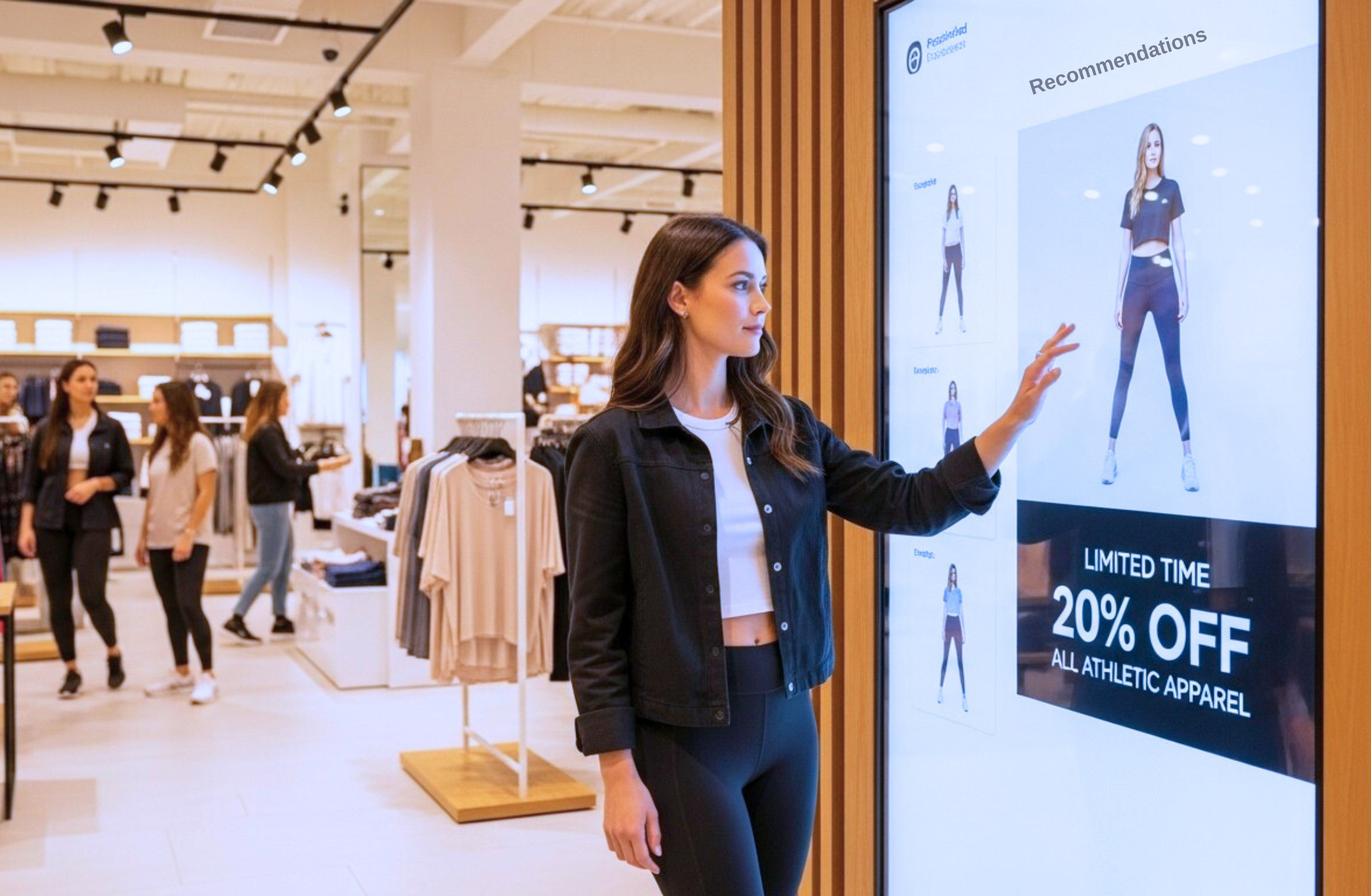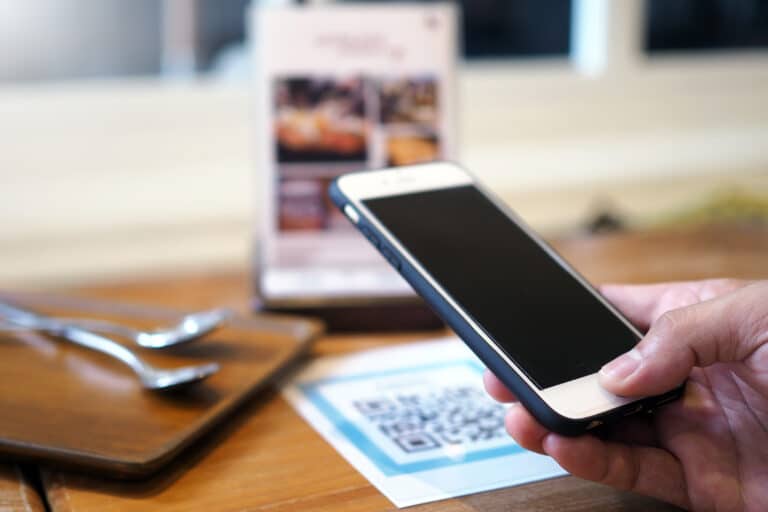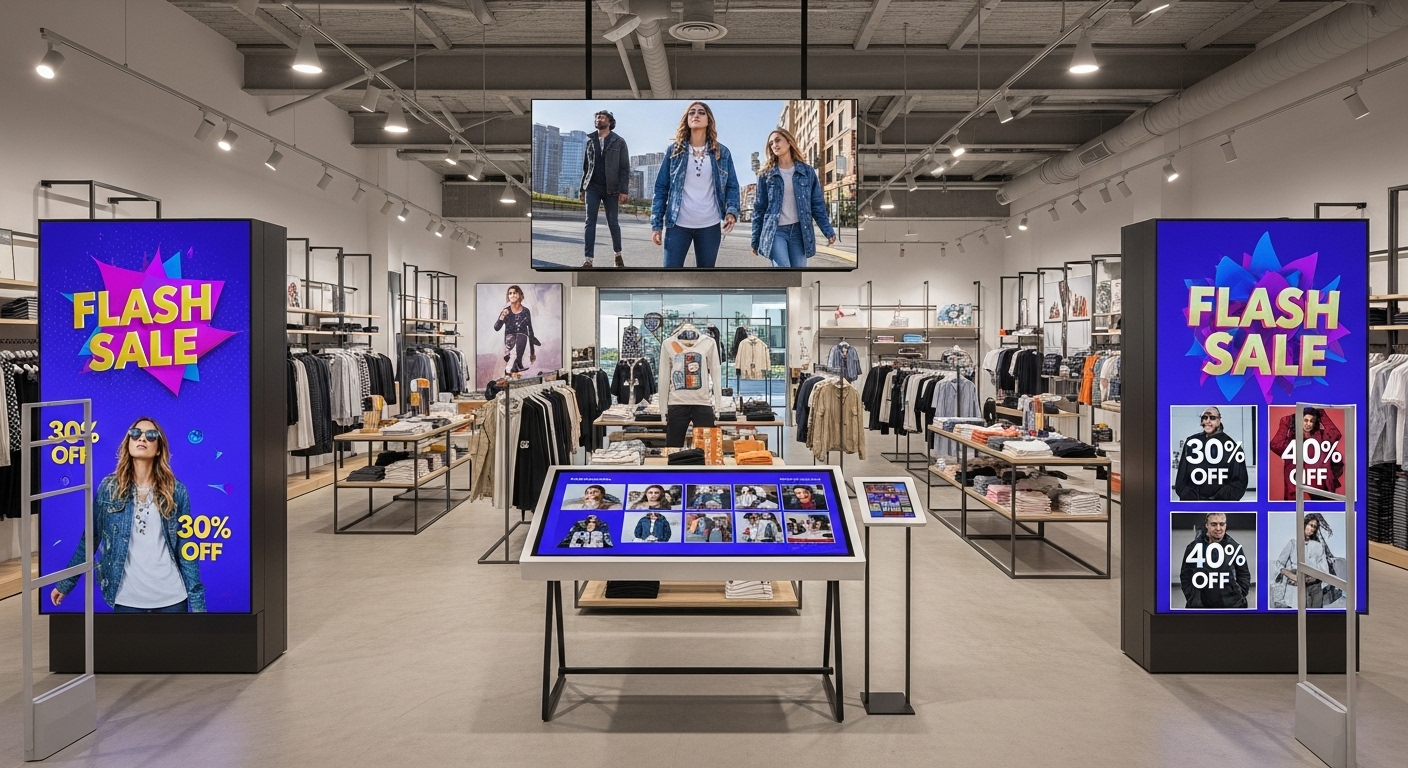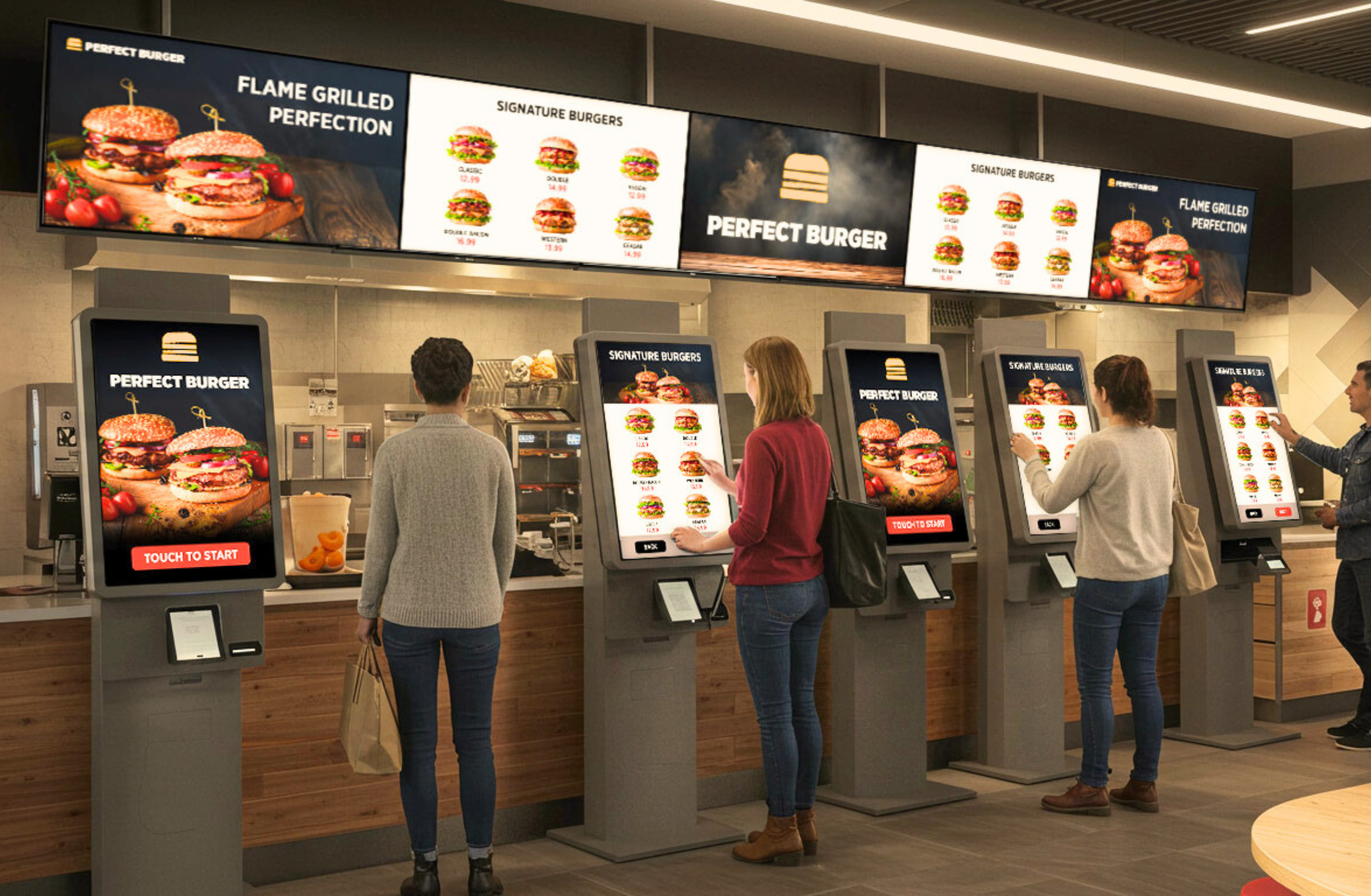
Is the QR code craze here to stay? Find out how restaurants can best use QR code technology to build business and…

Covid brought QR codes into the mainstream marketing mix, and restaurants the world over have introduced them more and more to drive frictionless payments, customer surveys and social media engagement, to name just a few use cases.
In fact, according to the National Restaurant Association, approximately half of fine dining, family dining, and casual dining restaurants hosted QR-code-accessible, digital menus in 2020.
Still as is usually the case when a technology sees a spike in adoption, there is a counterculture. Some people do not like them, and they do not want to use them. In a guest post for FSR Magazine (short for Full-Service Restaurants), CEO of Barcelona Wine Bar, Adam Halberg, writes that HIS customers do not like QR Codes.
He does not conduct an official study to support that opinion. However, he does make a good point. Restaurateurs should consider the experience they want to deliver to their customers before choosing any technology. The question is, who should use QR codes, and how.
Adam Halberg makes it sound as though only quick service restaurants like Burger King and Sonic would ever find a use for QR codes. He tries to split the hospitality industry into two worlds — one of convenience, the other of immersive experience. Then he argues that QR codes are for the convenience side, not for immersive dining.
First, we need a reality check. More fine-dining restaurants (over half) use QR code-supported menus than quick service restaurants (21%), according to the National Restaurant Association. Even if QR Codes are a poor choice for one fine dining restaurant, clearly they are not a poor choice for all.
Second, every restaurant needs to consider both efficiency and relationship building. Quick service restaurants want customers to come back, so they aim for accuracy and quality, as well as doing these things as cheaply as possible. Should sit-down restaurants forget about convenience, efficiency, and service? Of course not.
We should also remember that QR Codes are a tool, not an entire dining experience. Using technology for payment does not change the quality of the meal.
In fact, it could improve service quality in other areas. QR Code-supported payment replaces the traditional back-and-forth of check, payment, swipe, sign with a single check-sign action. That saves the server’s time. This efficiency gain can be reinvested in whatever way the server chooses. If a QR-based payment saves about 5 minutes per table, then that server could spend some of that time on better service.
Saving time and resources is less about how you do it, and more about what you do with the savings.
Basically, when you consider whether a technology can/will be widely adopted, look at Apple first. It’s a hard, terrible lesson but unfortunately true.
Most people have Apple devices, so until Apple decides to support a technology natively, it is a heavy lift and nearly impossible to expect everyone to download an additional utility app.
That was the problem. When QR codes first appeared, you had to download an app just to be able to read them. It doesn’t sound too difficult. A few people did, but not enough.
Ben Gauthier, Q Division, recalls that moment clearly, “Now, years and years ago, my daughter figured out that she could use QR Codes. And she took my phone and she was so excited. She told me all about these QR Code things. She got me to download the app, and then we went someplace and she found a code to scan. But it was the most boring thing in the world. And that was the last time she scanned a QR Code.”
“For Marketers, it was great; it was ‘come and see my micro-site that I had made about Frito-Lay’ or something. It didn’t work because people don’t want to scan just so they can see an ad. They scan for utility. It’s ‘I want to do something for me.”
What has changed? Some things, but not everything. Apple has changed. And Android, as well. Now everyone with a mobile device can use their camera to scan a QR Code. You just use your camera like you would when taking a photo.
One other thing needed to change: habit. Covid-19 suddenly made shared physical items less attractive. That’s why half of US restaurants that use physical menus now offer digital menus, as well. As a result, customers are accustomed to using QR Codes, which makes it much more likely that this technology is here to stay.
The question is, are you the kind of restaurant that wants to use QR Codes?
Let’s take a look at what you and your customers can do with them.
The concern is that QR codes are technology, and technology removes us from the moment and kills the experience. If I am on a date, and I take out my phone, I am no longer engaging with my date or spouse, which is the number one reason people go on dates.
But this concern depends on how you use technology.
If I am already looking at a bill, pulling out my wallet, etc. then a QR code would make little difference to me or my date; it just replaces the wallet with a phone — the POS system with a mobile device. If I am looking at a physical menu already, then would a digital menu kill the immersiveness?
Maybe. Always consider your brand and the impact you want to have. If you are creating an Industrial-Age environment, then maybe QR Codes do detract from that.
It is also worthwhile to understand the benefits that you can bring your customers with the technology, as well. Let’s take a moment to go through these use cases more deeply to see how they might impact the guest experience.
QR Codes launch you into the digital world where you can accomplish a lot more, faster.
A QR code is kind of like a more complicated bar code. It contains much more information than a bar code, can tell your device to create a contact, call a phone number, send an sms, or navigate to a website.
Most of the deep functionality, such as payments, mobile apps, and more, comes from this web url capability.
When Ben’s daughter navigated to that boring microsite, she was looking at a traditional ad, which does not make sense in today’s world. Now, when you consider successful websites, are they ads, or do they provide their users with capabilities? Websites are really web applications. They take input from the user, and then they do something that the user wants to help them accomplish their objective.
Deep linking is uses this url functionality to drive a web application designed to help the user accomplish that real-world goal that they have right at that moment.
Each QR code can represent a maximum of 7,089 characters. That is multiple pages of content, enough to help many applications perform a useful action. When you scan that code, all of that information is prepackaged, so that when you end up on that landing site, page or mobile app, you don’t have to enter anything in because it’s all been entered for you. The input component is filled in automatically.
This allows QR Codes to save a lot of time and really jumpstart that transition to digital. Any number of applications have been developed for restaurants, but we’ll discuss the most common ones here, just to give you something to sink your teeth into.
What does it look like?
The restaurant presents a qr code that when scanned, takes the customer to a payment application that lets them complete the payment process, with tip, etc. even representing the items on their order for validation.
How does it help?
QR-Code payments reduce the number of steps involved in the purchase process.
The traditional purchase process is something like this: check, card, POS, sign and tip.
With a QR code, the user scans, validates, chooses payment method, assigns tip, and completes transaction all from their mobile device. The process is faster and more convenient. It can make it easier for servers to spend more time at the end of the meal talking to guests rather than running to the POS.
What is the risk?
Could potentially speed up the dining experience, which some restaurants might not want. Also, as with any technology solution, it conveys a modern feel, rather than a traditional, old world character.
What does it look like?
The server delivers a QR code at the beginning of the meal, allowing patrons to scan the code and browse a digital menu on their mobile device. Possible integrations to allow for a seamless, online ordering experience.
How does it help?
Simple implementations allow restaurants to change their menu offerings and pricing more quickly. More complex implementations allow for customers to store their prior order history and preferences, so that over time their experience becomes easier.
What is the risk?
Some restaurants prefer to deliver a physical experience, and the tactile experience of a physical menu can help a person engage more deeply with the content.
What does it look like?
Customers scan a QR Code to be taken to a digital survey form.
How does it help?
This allows restaurateurs to answer their questions about clientele with objective data, identify and act on poor experience issues quickly.
What is the risk?
Low risk since surveys are optional.
Beyond the single transactions and use cases already described, QR codes provide much greater potential. They allow restaurants to know their customers before the meal.
Currently restaurants do not know who is dining until the moment they give their credit card, at the end of the meal.
With a deep link QR Code, you can send customers to a loyalty application that stores their order history, preferences, etc. Then, when they come back, these pieces of information can help restaurants serve them better and dial in quickly to dietary preferences or restrictions. It’s valuable, first-party data that helps build loyalty and trust.
Mobile optimization was a big part of the problem with earlier QR Codes, so it’s important to mention that here.
The issue was that in 2015, many websites were not mobile optimized. This meant that when you used a QR code to navigate to a website on your mobile device, you would confront a desktop website. You would have to scroll left and right to see the whole page. It was a really poor experience.
Most websites are mobile optimized today, but not all. If your website is not optimized for mobile, don’t use a QR code to send your customers there.
Some poor digital menus we have seen have the best intention to allow guests to customize their order down to the finest detail. You know, like pick a protein, pick a sauce, pick a way to cook the thing, choose your add-ons. The list goes on.
In-person, these order experiences can work well. Often, the customer gets to watch as their food is prepared, right before their eyes. That doesn’t work as well on mobile devices because the choices can become tedious.
This kind of order is harder to digitize because then the customer has to drill down into the depths of building the order, and it’s more like work.
There are plenty of fine dining cases where digital orders work well, even if the item costs $50. You know, it doesn’t take a lot of work to order a steak, medium rare.
You have to streamline the ordering process and think about how people order.
Creating a positive experience is about making it easy for customers to do what they want to do. Always test your solution, and when it goes live ask customers what they thought. By giving customers what they want and making it easier for them to interact with you over time, you are having a deeper engagement. You are increasing your value, and their loyalty.


